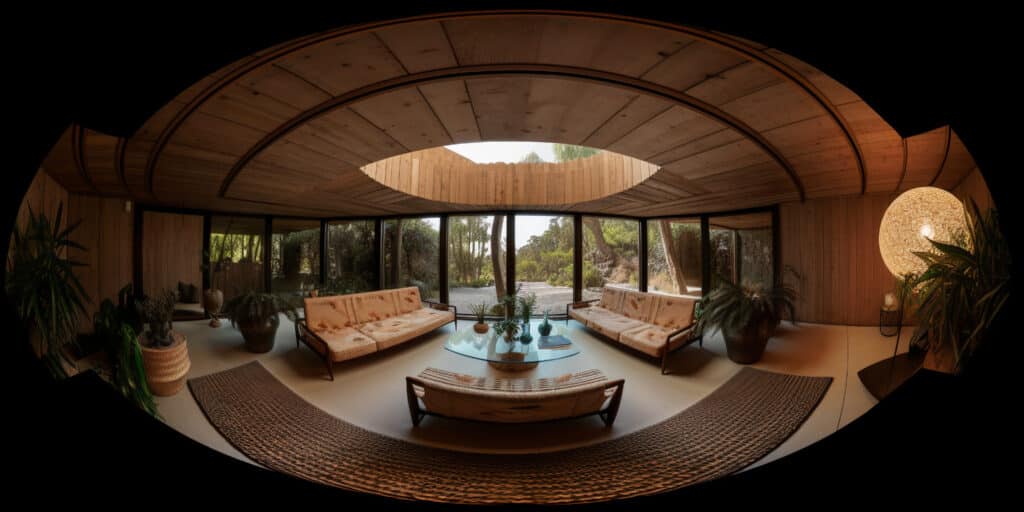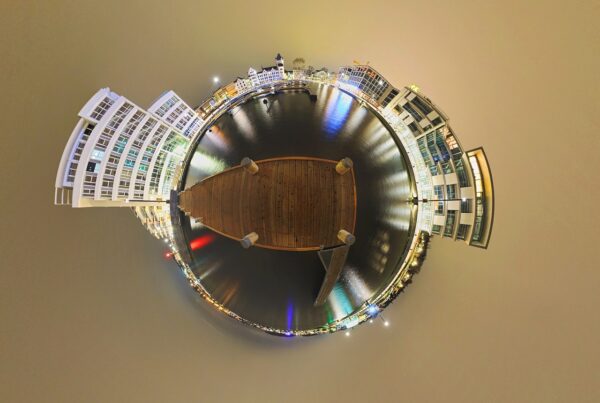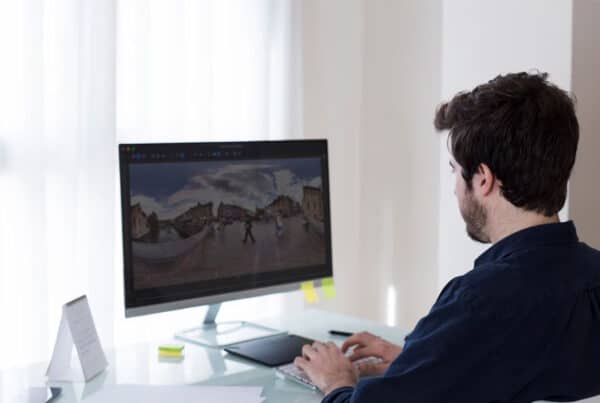
Introduction
Virtual tours have become increasingly essential across various industries, offering a digital alternative to physical exploration. Whether for real estate, tourism, education, or museums, virtual tours allow users to visit places remotely, providing an interactive experience that can be accessed from anywhere in the world. This is especially valuable in today’s fast-paced, digitally driven world, where time and travel constraints limit opportunities for on-site visits.
The appeal of virtual tours lies in their ability to create realistic and immersive experiences, offering viewers the next best thing to being physically present in a space. A key tool in enhancing this realism is the use of panoramic images, which provide a wide-angle, immersive view of environments, contributing significantly to the feeling of presence in virtual tours. This article delves into how panorama images enhance the realism of virtual tours and their role in transforming digital spaces into lifelike experiences.
What Are Panorama Images?
Definition and Characteristics of Panoramic Images
Panoramic images are wide-angle photographs that capture a much larger field of view than traditional photos. These images are typically created by stitching together multiple photographs taken from a single viewpoint. The result is a continuous, wide-angle view that can encompass an entire scene, whether it’s a cityscape, a museum, or the interior of a building.
The key characteristics of panoramic images are their wide aspect ratio and ability to depict a broader perspective than regular images. This wide-field capability allows users to see more of their surroundings in a single frame, providing a more comprehensive view of a space. In the context of virtual tours, panoramic images are crucial in replicating a sense of “being there” by giving users the ability to look around freely within the captured environment.
How Panoramic Images Capture Wide-Angle Views and Create a Sense of Depth and Space
The ability of panoramic images to capture wide-angle views helps create a more natural sense of depth and space. Traditional photographs tend to focus on a specific subject or area, limiting the viewer’s sense of the larger environment. In contrast, panoramas provide an expansive view that mimics how the human eye naturally perceives its surroundings.
This wide-angle approach is especially important in virtual tours because it enhances the user’s ability to explore and engage with their surroundings. For example, when navigating through a real estate listing or a museum, panoramic images allow the viewer to feel as though they are standing in the center of the room, with a complete view of the space, rather than viewing just a small portion of it.
Equirectangular Projection and How It Aids in Virtual Tour Creation
Equirectangular projection is a technique used to transform spherical images into a flat, two-dimensional format. This is particularly useful in virtual tours, as it allows panoramic images to be mapped onto a 360-degree environment, enabling users to interact with the image from any angle. The equirectangular projection ensures that there is minimal distortion, making the virtual environment feel natural and true to life.
The use of equirectangular projection in panoramic images plays a critical role in virtual tours, as it allows the creation of fully immersive experiences. When combined with VR (Virtual Reality) or 3D rendering technologies, equirectangular panoramic images help users feel as though they are physically present within the environment, enabling them to look around and explore from different viewpoints.
The Role of Panorama Images in Virtual Tours
How Panorama Images Differ from Traditional 2D Photography in Virtual Tours
Traditional 2D photography is limited to a fixed viewpoint, offering only a single perspective of a scene. In contrast, panoramic images are designed to capture the entirety of a space, often spanning 180 or 360 degrees. This wide field of view provides users with the ability to explore and interact with the environment in a way that traditional photographs cannot.
In virtual tours, panoramic images help bridge the gap between static images and fully interactive 3D environments. By offering multiple perspectives within a single frame, panoramas create a sense of depth and openness, making the experience feel more like an actual visit rather than simply observing a photo.
The Importance of High-Quality Panoramic Images in Enhancing Viewer Engagement
The quality of panoramic images is crucial in determining how immersive a virtual tour can be. High-resolution images with sharp detail, accurate color reproduction, and minimal distortion are essential for creating a realistic experience. The more lifelike the image, the more engaged users will be, as they will feel as though they are exploring the space firsthand.
High-quality panoramic images also help ensure that users can zoom in on specific details without losing clarity, making it easier for them to interact with the environment. Whether it’s inspecting a piece of artwork, examining architectural details, or simply enjoying the scenery, well-crafted panoramic images contribute to a more enjoyable and immersive virtual tour experience.
Techniques to Create Distortion-Free, High-Resolution Panoramas for Virtual Tours
To achieve distortion-free, high-resolution panoramic images for virtual tours, photographers and creators often employ specific techniques. These include proper camera alignment, ensuring consistent exposure settings across all images, and using specialized stitching software to seamlessly combine individual shots. Software like Pano2VR, PTGui, and AutoPano are commonly used for stitching and optimizing panoramic images, allowing creators to eliminate unwanted distortions and create smooth, natural transitions between individual frames.
Additionally, advanced HDR (High Dynamic Range) techniques can be employed to capture greater detail in both the bright and dark areas of a scene, further enhancing the quality and realism of the final image. These techniques ensure that the panoramic images used in virtual tours are not only visually stunning but also technically accurate, creating an experience that feels authentic and immersive.
Panoramas for Realistic Immersion
How Panoramic Images Help Simulate a True-to-Life Environment for Users
Panoramic images play a central role in simulating a true-to-life environment by providing a comprehensive and realistic view of the space. Unlike traditional images, which might capture only a limited portion of the environment, panoramic images allow users to explore an entire space from a single viewpoint. This comprehensive approach helps recreate the experience of being physically present in a location, making virtual tours feel more lifelike and engaging.
In virtual tours, the ability to look around freely within a panoramic image helps users orient themselves within the space, fostering a sense of agency and control. By allowing users to move through the environment as they would in real life, panoramic images contribute to a more authentic and satisfying virtual tour experience.
The Seamless Transition Between Different Viewpoints Within a Tour
One of the key benefits of using panoramic images in virtual tours is the ability to create smooth transitions between different viewpoints. When moving through a virtual tour, users can navigate from one panoramic image to another, with each viewpoint providing a seamless continuation of the last. This continuous flow eliminates the jarring, disconnected experience that can result from switching between static images or 3D models.
The transition between different panoramic images enhances the realism of the tour, as users can virtually “walk” through the space and explore it in its entirety. Whether it’s moving between rooms in a home or navigating through different exhibits in a museum, the seamlessness of panoramic image transitions helps maintain immersion and engagement.
The Psychological Effects of Panoramic Visuals: Fostering a Sense of Presence and Immersion
Psychologically, panoramic images contribute to the feeling of presence, which is the sensation of being physically immersed in a virtual environment. The wide-angle, continuous nature of panoramic images tricks the brain into perceiving the virtual space as a real, tangible environment. This feeling of presence is further enhanced when combined with other immersive technologies such as VR, where users can physically interact with their surroundings.
The psychological impact of panoramic images on users’ sense of immersion is profound. As users explore virtual environments, the detailed and expansive views provided by panoramas help them feel as though they are genuinely present in the space, fostering deeper engagement and a stronger emotional connection to the experience.
Optimizing Panorama Images for Virtual Tours
Best Practices for Capturing and Editing Panoramic Images
Creating high-quality panoramic images for virtual tours requires careful planning and execution. Some best practices include:
- Lighting: Ensure that lighting is consistent across all frames to avoid visible seams or mismatched exposure.
- Composition: Frame the scene in a way that maximizes the field of view, ensuring important features are included in the panoramic image.
- Stitching: Use advanced software to stitch images together seamlessly, eliminating distortion and ensuring a smooth, natural transition between frames.
Using Advanced Tools for Panorama Optimization
Tools like Pano2VR, 3DVista, and Kolor Autopano provide advanced features for optimizing panoramic images. These tools allow for the fine-tuning of image resolution, compression, and interactive features, ensuring that panoramic images are both visually stunning and functional for virtual tours.
Balancing Image Quality with Performance
While high-resolution images enhance the realism of virtual tours, large file sizes can hinder performance and slow down loading times. To optimize performance, it’s important to use compression techniques that reduce file sizes without sacrificing image quality. This ensures that virtual tours load quickly and function smoothly, providing a seamless user experience.
Interactive Features Enhanced by Panorama Images
Panoramic images become even more powerful when combined with interactive features. Hotspots, which are clickable areas within the image, allow users to access additional content such as videos, audio, or text. This makes the virtual tour more informative and engaging, as users can interact with the environment and explore areas of interest.
Integrating interactive floor plans, 3D models, and multimedia elements into panoramic tours further enriches the experience, providing users with multiple ways to explore and interact with the virtual space.
Conclusion
Panoramic images play a pivotal role in enhancing virtual tours by offering expansive, wide-angle views that help replicate the immersive feeling of being physically present in a space. Unlike traditional 2D photography, panoramas allow users to explore their surroundings from various perspectives, creating a more interactive and engaging experience. The use of equirectangular projection and high-quality images ensures a distortion-free, realistic experience, essential for applications in real estate, tourism, museums, and education.
By utilizing panoramic imagery, virtual tours become dynamic and lifelike, capturing a deeper sense of space and providing users with the freedom to explore at their own pace. Whether viewed on a desktop or experienced through VR technology, panoramas enhance the level of realism and depth, contributing significantly to the effectiveness and appeal of virtual tours.
Enhance the realism of your virtual tours with panorama images! Contact Virtually Anywhere today to discover how high-quality panoramic photography creates immersive, lifelike experiences that engage viewers and showcase spaces in stunning detail. Whether for real estate, tourism, or business, panoramic images take virtual tours to the next level. Start transforming your virtual experiences today!




